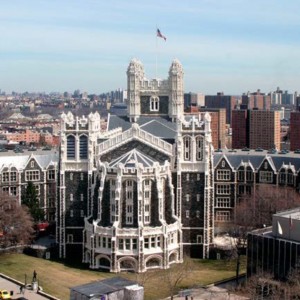Honoring America’s Hero, Alexander Hamilton
By Robert E. Wright, Nef Family Chair of Political Economy at Augustana University and the Alexander Hamilton Awareness Society’s National Hamilton Scholar for 2017. My prepared remarks presented at the Weehawken, N.J. Elks Lodge, 11 July 2017
In many ways, words are like money. If the supply of money grows
too quickly, the value of each dollar decreases and the economy experiences
what we call inflation. Likewise, the value of each word is diminished in
direct proportion to the number of times it is used. Hero is one such word.
Since 1851, The New York Times has used the word hero in its pages almost
half a million times. Almost a quarter of those uses occurred in the Third
Millennium AD, or just the last 17 and a half years. That finding, by the way,
isn’t determined by the length of the newspaper as the word hero was used more
frequently in the 1870s and 1880s than in any subsequent decade until the
1980s, when its use took a strong upward trajectory that might be termed
skyrocketing. It was certainly faster than the growth in the number of words
published in the Old Gray Lady.
Because of inflation, when economic historians cite a nominal
dollar figure from the distant past, we often remind readers or listeners that
a dollar used to buy a lot more than it does today. How much more is more a
matter of perspective than science. The website measuringworth dot com
currently lists six different ways of comparing a dollar in 1790 with a dollar
today and the estimates from those 6 methodologies vary from a low of $25 to a
high of almost $100,000. Anyway you slice it, though, the dollar has
depreciated an appreciable amount.
When I assert that Alexander Hamilton was “America’s Hero,” I mean
that he was a hero in the 1790s’ sense of the word, not in today’s depreciated
language. How many orders of magnitude different those are, I’ll leave for you,
the listeners, to decide.
And, of course, I speak of the real Hamilton, not the protagonist,
or hero if you will, of the musical Hamilton. I thought about calling
Hamilton a superhero but decided that sounded too cartoon-ish. Hamilton was a
real person, not a fictional character.
The real Hamilton was a real hero, an individual, as the Oxford
English Dictionary put it, QUOTE admired or acclaimed for great qualities
or achievements UNQUOTE. More specifically, Hamilton was a hero-leader and
hero-founder, two subspecies of hero that help to found and lead new countries
and institutions.
Hamilton has also been called a military hero for his actions on
Revolutionary War battlefields from Princeton to Yorktown. Here, though, hero
collapses into courageous at a time when capable officers who displayed courage
under fire were a dime a dozen. Literally a dime a dozen if you accept the
higher valuations of the dollar from measuringworth dot com.
Seriously, for an achievement to be termed great, as in large or
important or, if I may, heroic, the achiever must be an indispensable
component of the achievement. He, or she in the case of the heroine, cannot
be merely another component or factor in the outcome, he must be the primary
causal agent, the keystone or linchpin of the whole affair.
When I call Hamilton America’s Hero, I do not mean that America
embraces Hamilton as its hero. It apparently does so at present, thanks in part
to the popularity of the aforementioned musical, but to this day I cannot
obtain employment teaching in a college or university history department,
despite having published 18 history books, because Hamilton is anathema to the
powers that be in academe and I am pro-Hamilton enough to have named my
firstborn son Alexander Hamilton Was Wright. That’s right, his first name is
Alexander, his two middle names are Hamilton and Was, and his last name sounds
like correct but actually means a maker of things, as in Alexander Hamilton
made America. I will not give the silly views of Hamilton’s critics a hearing
here today but I thought them wrong when I earned my Ph.D. twenty years ago and
today I know that they are wrong.
Hamilton is America’s Hero because he was indispensable to the nation’s founding and subsequent flourishing.
Only his long-time friend George Washington was similarly heroic and, indeed,
the two were indispensable to each other. We might consider them a heroic dyad,
a binary star system, each grown stronger with the help of the other’s gravity
… and gravitas. Had either of those luminaries perished at Valley Forge, or
during that even more miserable but less well known winter at Morristown, we
almost certainly would not live in a prosperous, united United States.
That claim, strong as it is, can strain credulity only in those
who do not fully comprehend America’s precarious position even after Britain
formally recognized its independence. Everything in America, or at least
everything of importance, was a mess in 1785. Just a decade later, everything
of importance was as perfect as was then humanly possible. One man was directly
responsible for the sea change in the young nation’s affairs, and it certainly
wasn’t Thomas Jefferson or any of his Virginian minions, it was the bastard
brat of a Scotch pedlar, a precocious and well-vetted immigrant from the West
Indies. Imagine that.
In 1785, the nation had several competing units of account and
scarcely any money in circulation, save some state-issued paper bills of credit
that lost value almost daily. In 1795, America enjoyed, thanks to Hamilton, a
single unit of account, the U.S. dollar, and a sufficient supply of money,
rendered stable in value because Hamilton legally linked it to the precious
metals. Although disrupted by the Civil War, the U.S. monetary union has
survived to this day and is largely responsible for the nation’s close economic
and political integration.
In 1785, private credit was scarce because only a few banks
existed. In 1795, the number of banks, and the amount of capital invested in
banking, was growing because Hamilton wanted it that way. In addition to
writing and supporting state bank charters, Hamilton induced Congress and
Washington, above the self-serving din of Jefferson, to charter the Bank of the
United States, a for-profit corporation that stymied the Panic of 1792 and kept
the federal government’s finances in good repair.
In 1785, state taxes were so onerous that they stirred
revolutionary discontent severe enough to raise the specter of successful tax
rebellions in Massachusetts and elsewhere. In 1795, state taxes were light because
the states had been relieved of their onerous Revolutionary-era debts by
Hamilton’s assumption plan. Rather than threatening the social and political
order, rebellions against federal taxes were mere annoyances, easily put down
by the dyad and the gravitas of the new federal government.
In 1785, the national government and most of the state governments
were bankrupt, unable to pay the interest due on their debts much less to
discharge the principal. A decade later, the United States was among the most
creditworthy nations in the world as judged by the price and quantity of its
bonds traded in Amsterdam and London. America used its high credit standing to
purchase new lands, like the Louisiana Territory, and fight important wars
against slave masters and global tyrants. The high price of its bonds was proof
that, for all its foibles, the U.S. federal government fundamentally respected
property rights and was not going to bury itself in debt.
In fact, Hamilton helped to establish a sort of fiscal
constitution that lasted for nearly two centuries. The first major rule was to
borrow only when absolutely necessary and to establish the taxes needed to repay
a new debt at the same time the debt was incurred so that everybody realized
that borrowing was not free, just expedient in certain circumstances.
In 1785, the country was a loose collection of states, not a
unified whole. In 1795, due to the widespread ownership of federal bonds,
thousands of Americans looked to the federal government, not to their state
governments, as the font of sovereignty. To protect their pecuniary interests,
those bondholders, as Hamilton predicted, cemented the Union together when a
host of forces, like slavery, threatened to tear it asunder.
In 1785, the young nation’s economy was largely agricultural and
small-scale. It still was a decade later but growing numbers of corporations
were already changing the structure of the economy, shifting it towards
finance, transportation, and manufacturing. Hamilton led the way here by
establishing the Society for the Establishment of Useful Manufactures in
Paterson, New Jersey, which was meant to be a demonstration project, not a
monopolistic behemoth as Hamilton’s detractors claimed. Hamilton also pioneered
corporate governance rules that encouraged investment by small investors by
limiting the voting powers of large investors in corporate elections.
Commerce, internal and international, nearly at a standstill in
1785, also became more important because of Hamilton. Despite numerous claims
to the contrary, Hamilton was not in favor of protective tariffs. The taxes on
imports that he suggested to Congress were revenue tariffs only, designed to maximize
the federal government’s revenues, and hence its ability to service and repay
its debt, not to protect specific domestic economic interests. Hamilton’s Report
on Manufactures makes that point clear, but the long, complex document has
been widely misinterpreted and misused by those who value partisan ideology
over truth.
All of those policy reforms were made possible by the passage of
the U.S. Constitution. While Hamilton played little role in most of the
convention’s debates, he essentially called the convention together in
Philadelphia in the summer of 1787 and, through his strenuous efforts writing
as Publius in The Federalist Papers, as well as his role in New York’s
ratification convention, Hamilton ensured the Constitution’s passage and its
subsequent interpretation by generations of jurists. Judicial review, long one
of the most important of our governmental checks and balances, also can be
traced directly to Hamilton.
Had Hamilton lived another 20 years, as his two main detractors,
John Adams and Thomas Jefferson had the good fortune to do, all of this would
be much better understood. Instead, Hamilton’s legacy has been used, and
abused, to support policies and politics that Hamilton abhorred. Had he lived,
both of the leading causes of the Civil War, slavery and protective tariffs,
would have been reduced if not eliminated and the horrors of that conflict, and
its long aftermath, avoided. I daresay our GDP would be a third higher today had
Burr’s bullet not found our hero’s abdomen.
Alas, the events that took place on this very ground ten score and
a farmer’s dozen years ago ended both Hamilton’s heroic deeds and his ability,
in what would have been his later, reflective years, to recount all that he had
done for posterity. It has been left to scholars like Richard Brookhiser, David
Cowen, Forrest McDonald, Michael Newton, Richard Sylla, and a handful of others
to piece together Hamilton’s many contributions to America and its prosperity
and to speculate about his future heroism. But rather than lament what would
have been, we should rejoice in what was, and honor Hamilton for being our
hero, America’s Hero, the man, along with Washington, most responsible for this
country’s greatness, past and present. We cannot resurrect Hamilton himself,
but we can certainly resurrect his insights to guide us through the troubled
times ahead.
Honor is another word that has lost value over time. In Hamilton’s
time, to honor somebody was to repay him or her full principal and interest.
Applying that concept today is subject to interpretation, but I would say what
we owe to Hamilton is the Truth, as close as we can comprehend it. That means,
at a minimum, not make clearly false statements about the man. So don’t claim
that a statesman who wanted an energetic government wanted a big government,
that a poor bastard was an aristocrat, that somebody who wanted checks and
balances to apply to everyone was a monarchist, that a financier who built an
amortization clause into his bonds and who stressed that a national debt could
become excessive wanted a large, perpetual national debt, or that an economist
who simply discussed the microeconomic effects of protective tariffs wanted to
implement them. Honor Hamilton, honor Burr, honor all of the Founders by
studying their own words and actions or at least by reading the best, most
honest scholarship about them available.
Thank you!
















